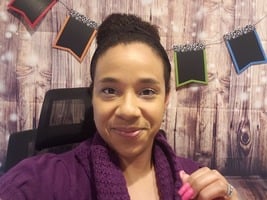I recently had the great pleasure of speaking with Pam Allyn, children’s literacy advocate and author of What to Read When. The plan was for us to chat for a few minutes about this useful and important book. But what evolved was a far ranging conversation between two passionate readers about how to raise readers. It was great fun.
First, the book. What to Read When, published in 2009, is a compendium of great books for kids, delivered in several different ways.
There is a primer on early reading development and lists of great books for kids at different ages and stages.
There is a list of landmark books: those books that not only deliver universal themes in beautiful prose, but which also had influence, that marked a change in children’s literature or that so perfectly reflect a moment in time that they can help a child better understand a little piece of history. Ms. Allyn offers a few sentences to place each one of these important books in their historical context: the first book to feature a child hero of color (The Snowy Day by Ezra Jack Keats), a classic published at the start of the Civil Rights movement that shouted the message that a person’s a person no matter how small (Horton Hears a Who, by Dr. Seuss), and for many of us (myself included) our very first brush with the power of friendship and grief (Charlotte’s Webb by E.B. White).
And then there are books that speak to fifty important themes. Looking for books to reassure a nervous child heading off to kindergarten? There are books for that. Your youngster is a budding scientist? Here are 13 titles that might speak to her. Trying to explain adoption to your adopted child or his biological sibling? All those themes, and many, many more, are reflected in brilliantly crafted children’s literature that Ms. Allyn has painstakingly compiled for you.
But the book is more than that. It’s a journey, a resource and an inspiration. I found myself tearing up as I learned that one of my most beloved characters narrowly escaped the Nazis and smiling at the memory of the midnight launch party for the last Harry Potter installment.
It is a book that should be on all of our shelves, stuffed in between those references we turn to over and over again.
But there is a subtler message here and one that Ms. Allyn is excited to share. Children are born with an innate curiosity about their world, she believes, and developing a love of reading empowers them to explore all of the things about which they are interested. We agree.
With our teachers as our partners, Ms. Allyn hopes that parents will take an active role in raising readers. “In our over-scheduled world, part of our responsibility as parents is to create time and space in which our budding readers can flourish. To provide quiet, peaceful places, a big stack of books and the opportunity to get more. And the freedom to allow our children to read what is interesting to them and the faith to trust that, given the chance, they will choose the books that are right for them,” she says. Finally, “encourage and praise your children so that they know that you value and respect the time they spend reading.”
Why is it so important for us as parents to help nurture the next generation of readers? “Reading builds imaginative and fosters creative thinking. If we don’t allow our kids the space to develop as readers, we risk creating a world devoid of creative thinkers,” Ms. Allyn cautions.
So pack up your child and hit the library or the bookstore. Ask your child “what’s interesting to you today? What do you feel like reading about?” Bring home a big pile of books, for him and for you, and cuddle up.


